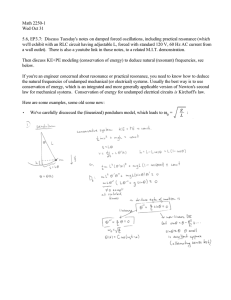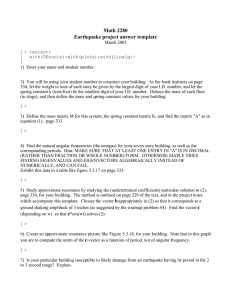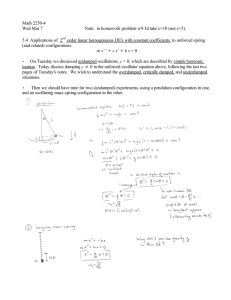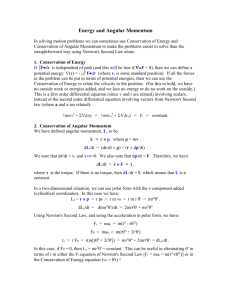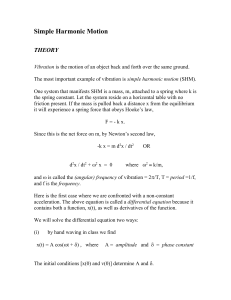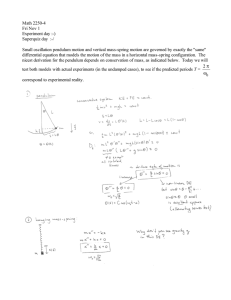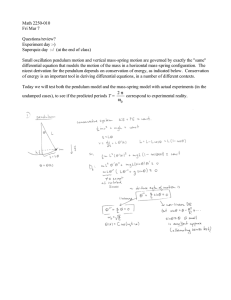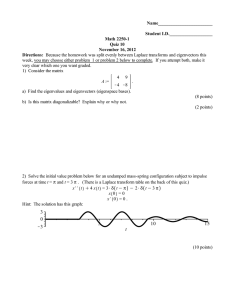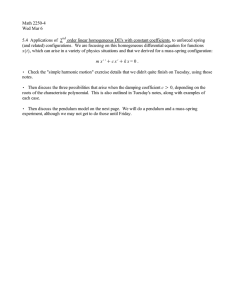Math 2250-4 Wed Mar 21
advertisement
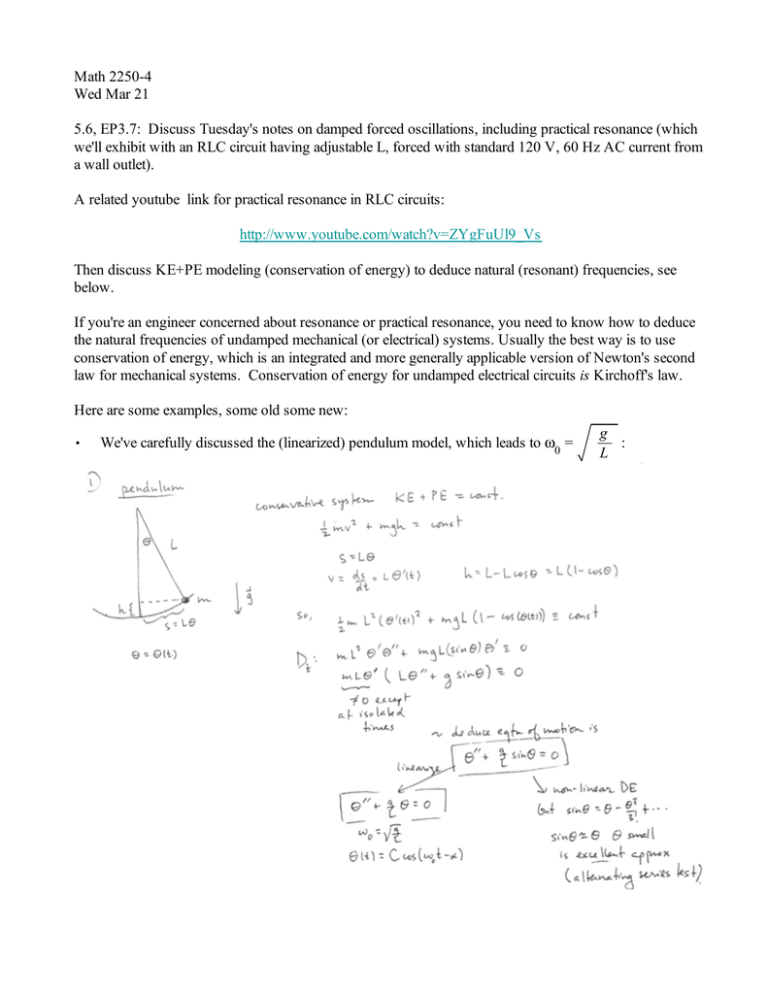
Math 2250-4 Wed Mar 21 5.6, EP3.7: Discuss Tuesday's notes on damped forced oscillations, including practical resonance (which we'll exhibit with an RLC circuit having adjustable L, forced with standard 120 V, 60 Hz AC current from a wall outlet). A related youtube link for practical resonance in RLC circuits: http://www.youtube.com/watch?v=ZYgFuUl9_Vs Then discuss KE+PE modeling (conservation of energy) to deduce natural (resonant) frequencies, see below. If you're an engineer concerned about resonance or practical resonance, you need to know how to deduce the natural frequencies of undamped mechanical (or electrical) systems. Usually the best way is to use conservation of energy, which is an integrated and more generally applicable version of Newton's second law for mechanical systems. Conservation of energy for undamped electrical circuits is Kirchoff's law. Here are some examples, some old some new: , We've carefully discussed the (linearized) pendulum model, which leads to w0 = g : L , We used Newton's second law (and linearization) for the (e.g. hanging) mass-spring configuration Exercise 1a) Use the fact that work done by an object is converted into potential energy (in a conservative system), to find the total energy of the undamped mass-spring system, and use this TE to re-derive the equations of motion and natural angular frequency, in analogy to how we worked the pendulum example. 1b) Multicomponent systems are best understood using conservation of energy, when Newton's law may not apply in any obvious way. For example, suppose the spring in the example above actually has a positive mass ms , and that the speed of the spring at location µ from the fixed (top) end to the moving (bottom end) is given by µ x# t . Find the (slower) natural angular frequency in this case. Hint: First show that the KE of the spring is 1 KEs = ms x# t 2 . 6 (We used the result of this computation a few weeks ago in correcting our modeling for the mass-spring k experiment. The solution is w0 = , which is slower than if the spring were massless.) 1 m C ms 3 , Consider the following "rolling mass" configuration (the spring constant of the massless spring is not shown, but as usual we call it k.) Exercise 2) Find the natural angular frequency. Use the fact that the KE of the rotating disk is given by 1 2 KED = I w , 2 where w is the angular frequency of the rotation and I is the moment of inertia, which for a uniform disk of 1 mass m and radius a is given by I = ma2 . (Directly computing the KE of the rotating disk is an integral 2 computation, except in this case it's a double integral unlike the the spring example we just completed. The computation is relatively straightforward using polar coordinates, and you might even have done it in your multivariable calculus class when you discussed moments of intertia....in general, moments of intertia are used to compute rotational kinetic energy about centers of mass, and moments are used to compute angular momentum, as well as centers of mass....this is why Calculus classes have units about these topics.) 2 k k (The answer is w0 = z .82 , which is slower than if the mass wasn't rolling. Could 3 m m you have worked this problem if the spring actually had mass?)
